-
 Bitcoin
Bitcoin $81,560.5117
-5.51% -
 Ethereum
Ethereum $1,771.5096
-6.33% -
 Tether USDt
Tether USDt $0.9997
-0.02% -
 XRP
XRP $2.0181
-5.66% -
 BNB
BNB $586.3042
-2.90% -
 USDC
USDC $0.9999
-0.01% -
 Solana
Solana $114.4035
-11.78% -
 Dogecoin
Dogecoin $0.1574
-8.81% -
 TRON
TRON $0.2356
-1.07% -
 Cardano
Cardano $0.6304
-7.98% -
 Toncoin
Toncoin $3.5817
-10.14% -
 UNUS SED LEO
UNUS SED LEO $9.4001
0.05% -
 Chainlink
Chainlink $12.4964
-9.88% -
 Stellar
Stellar $0.2554
-5.72% -
 Avalanche
Avalanche $17.9353
-7.12% -
 Sui
Sui $2.2095
-9.36% -
 Shiba Inu
Shiba Inu $0.0...01210
-4.11% -
 Hedera
Hedera $0.1588
-8.41% -
 Polkadot
Polkadot $3.9938
-3.88% -
 Litecoin
Litecoin $81.5008
-4.91% -
 MANTRA
MANTRA $6.3620
0.67% -
 Bitcoin Cash
Bitcoin Cash $295.0277
-4.58% -
 Dai
Dai $0.9999
0.01% -
 Bitget Token
Bitget Token $4.4599
-2.73% -
 Ethena USDe
Ethena USDe $0.9994
-0.05% -
 Pi
Pi $0.5677
-16.47% -
 Monero
Monero $209.1420
-4.72% -
 Hyperliquid
Hyperliquid $11.3307
-18.13% -
 Uniswap
Uniswap $5.6900
-8.31% -
 Aptos
Aptos $4.9771
-7.48%
Forced liquidation price calculation in CoinEx futures trading
In CoinEx futures trading, understanding forced liquidation price is crucial for risk management; it's calculated using initial margin, maintenance margin, leverage, and market price.
Apr 03, 2025 at 05:35 am
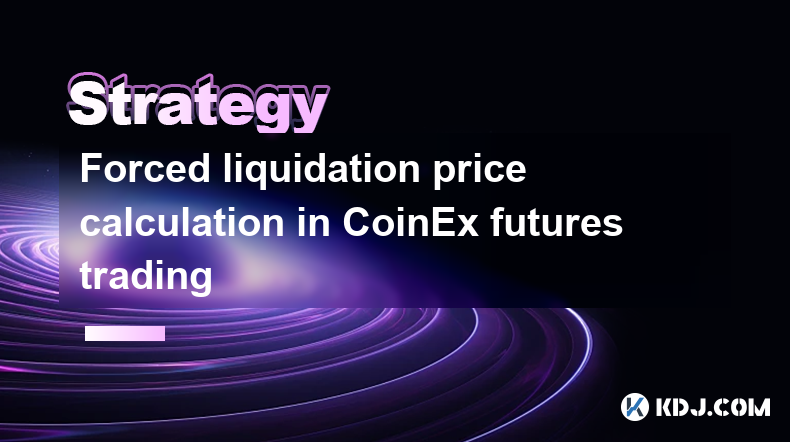
In CoinEx futures trading, understanding the forced liquidation price is crucial for managing risk and maintaining your positions. The forced liquidation price is the point at which your position is automatically closed to prevent further losses. This mechanism is designed to protect both the trader and the platform from negative account balances. The calculation of the forced liquidation price depends on several factors, including the initial margin, maintenance margin, and the leverage used. By understanding these elements, traders can better anticipate when their positions might be liquidated and take appropriate actions to manage their trades effectively.
Key Components in Forced Liquidation Price Calculation
The forced liquidation price in CoinEx futures trading is influenced by several key components. The initial margin is the amount of funds required to open a position. The maintenance margin is the minimum amount of equity that must be maintained in the account to keep the position open. Leverage amplifies both potential gains and losses, affecting the liquidation price. Additionally, the position size and the current market price of the asset play significant roles. Understanding these components is essential for accurately calculating the forced liquidation price.
Formula for Calculating Forced Liquidation Price
The formula for calculating the forced liquidation price in CoinEx futures trading varies depending on whether you are holding a long or short position. For a long position, the forced liquidation price can be calculated as follows:
- Long Position Formula: (Entry Price) (1 - Maintenance Margin Rate) / (1 - Initial Margin Rate)
For a short position, the formula is slightly different:
- Short Position Formula: (Entry Price) (1 + Maintenance Margin Rate) / (1 + Initial Margin Rate)
These formulas help traders determine the price at which their positions will be liquidated, allowing them to plan their trades more effectively.
Example of Forced Liquidation Price Calculation
Let's consider an example to illustrate how to calculate the forced liquidation price in CoinEx futures trading. Suppose you enter a long position in BTC/USDT futures with an entry price of $30,000, an initial margin rate of 10%, and a maintenance margin rate of 5%. Using the long position formula:
- Long Position Calculation: (30,000) (1 - 0.05) / (1 - 0.10) = 30,000 0.95 / 0.90 = $31,666.67
This means that if the market price of BTC/USDT falls to $31,666.67, your long position will be liquidated. Understanding this calculation helps you set stop-loss orders and manage your risk more effectively.
Impact of Leverage on Forced Liquidation Price
Leverage plays a significant role in determining the forced liquidation price in CoinEx futures trading. Higher leverage increases the potential for both gains and losses, which in turn affects the liquidation price. For instance, if you use higher leverage, the initial margin rate will be lower, resulting in a closer forced liquidation price to the entry price. Conversely, lower leverage means a higher initial margin rate, pushing the forced liquidation price further away from the entry price. Traders must carefully consider their leverage choices to manage their risk exposure and avoid premature liquidation of their positions.
Strategies to Avoid Forced Liquidation
To avoid forced liquidation in CoinEx futures trading, traders can employ several strategies. One effective approach is to use stop-loss orders, which automatically close your position at a predetermined price to limit losses. Another strategy is to monitor your margin levels closely and add more funds to your account if necessary to meet the maintenance margin requirements. Additionally, reducing leverage can help increase the distance between the current market price and the forced liquidation price, giving you more room to maneuver. By implementing these strategies, traders can better manage their positions and reduce the risk of forced liquidation.
Understanding Margin Calls and Forced Liquidation
In CoinEx futures trading, a margin call occurs when the equity in your account falls below the maintenance margin level. This is a warning that your position is at risk of being liquidated. If the market continues to move against your position and the equity falls further, the platform will initiate a forced liquidation to close your position and prevent a negative account balance. Understanding the relationship between margin calls and forced liquidation is crucial for managing your trades effectively and avoiding unexpected losses.
Practical Tips for Managing Forced Liquidation Risk
Managing the risk of forced liquidation in CoinEx futures trading requires a combination of knowledge and strategy. Here are some practical tips to help you navigate this aspect of trading:
- Regularly Monitor Your Positions: Keep a close eye on your open positions and the market conditions to anticipate potential liquidation risks.
- Use Stop-Loss Orders: Set stop-loss orders to automatically close your positions at a predetermined price to limit losses.
- Adjust Leverage: Consider reducing leverage to increase the buffer between the current market price and the forced liquidation price.
- Maintain Adequate Margin: Ensure that your account has sufficient funds to meet the maintenance margin requirements and avoid margin calls.
- Stay Informed: Stay updated with market news and trends that could impact the prices of the assets you are trading.
By following these tips, traders can better manage their risk and avoid the pitfalls of forced liquidation.
The Role of Market Volatility in Forced Liquidation
Market volatility plays a significant role in the risk of forced liquidation in CoinEx futures trading. High volatility can lead to rapid price movements, increasing the likelihood of hitting the forced liquidation price. During periods of high volatility, traders need to be particularly vigilant and may need to adjust their strategies accordingly. For instance, setting wider stop-loss orders or reducing leverage can help mitigate the risks associated with volatile markets. Understanding the impact of market volatility on forced liquidation is essential for effective risk management in futures trading.
Case Study: Real-World Example of Forced Liquidation
To better understand forced liquidation in CoinEx futures trading, let's examine a real-world example. Suppose a trader opens a short position in ETH/USDT futures with an entry price of $2,000, an initial margin rate of 15%, and a maintenance margin rate of 7.5%. Using the short position formula:
- Short Position Calculation: (2,000) (1 + 0.075) / (1 + 0.15) = 2,000 1.075 / 1.15 = $1,869.57
If the market price of ETH/USDT rises to $1,869.57, the trader's short position will be liquidated. In this scenario, the trader could have avoided liquidation by setting a stop-loss order at a higher price or by adding more funds to their account to meet the maintenance margin requirements. This case study highlights the importance of understanding and managing forced liquidation risk in futures trading.
The Psychological Aspect of Forced Liquidation
The psychological impact of forced liquidation in CoinEx futures trading should not be underestimated. Experiencing a forced liquidation can be emotionally challenging, leading to stress and potential decision-making errors. Traders need to develop a strong mental framework to handle such situations. This includes setting realistic expectations, maintaining discipline, and not letting emotions drive trading decisions. By understanding the psychological aspects of forced liquidation, traders can better prepare themselves to manage their positions and recover from any setbacks more effectively.
The Importance of Risk Management in Futures Trading
Effective risk management is crucial in CoinEx futures trading to avoid forced liquidation and protect your capital. This involves understanding the forced liquidation price calculation and implementing strategies to manage your positions. Key risk management practices include setting appropriate stop-loss orders, monitoring margin levels, and adjusting leverage based on market conditions. By prioritizing risk management, traders can enhance their chances of success in the volatile world of futures trading.
Tools and Resources for Calculating Forced Liquidation Price
Several tools and resources are available to help traders calculate the forced liquidation price in CoinEx futures trading. Many trading platforms, including CoinEx, provide built-in calculators that automatically compute the forced liquidation price based on your position details. Additionally, there are third-party tools and apps designed specifically for futures trading that can assist with these calculations. Utilizing these tools can save time and help traders make more informed decisions about their positions. It's important to familiarize yourself with these resources to enhance your trading strategy and manage risk effectively.
The Role of Education in Understanding Forced Liquidation
Education plays a vital role in understanding forced liquidation in CoinEx futures trading. Traders should invest time in learning about the mechanics of futures trading, including how to calculate the forced liquidation price. Many educational resources, such as online courses, webinars, and trading guides, are available to help traders build their knowledge. By continuously educating themselves, traders can improve their understanding of forced liquidation and develop more effective trading strategies. This ongoing learning process is essential for long-term success in the futures market.
Common Questions and Answers Related to
Q1: What is the forced liquidation price in CoinEx futures trading?
A1: The forced liquidation price is the price at which your position in CoinEx futures trading is automatically closed to prevent further losses. It is calculated based on the initial margin, maintenance margin, leverage, position size, and current market price.
Q2: How do you calculate the forced liquidation price for a long position in CoinEx futures trading?
A2: For a long position, the forced liquidation price is calculated using the formula: (Entry Price) (1 - Maintenance Margin Rate) / (1 - Initial Margin Rate).
Q3: How do you calculate the forced liquidation price for a short position in CoinEx futures trading?
A3: For a short position, the forced liquidation price is calculated using the formula: (Entry Price) (1 + Maintenance Margin Rate) / (1 + Initial Margin Rate).
Q4: What factors affect the forced liquidation price in CoinEx futures trading?
A4: The forced liquidation price is affected by the initial margin, maintenance margin, leverage, position size, and the current market price of the asset.
Q5: How can traders avoid forced liquidation in CoinEx futures trading?
A5: Traders can avoid forced liquidation by using stop-loss orders, monitoring margin levels, reducing leverage, maintaining adequate margin, and staying informed about market conditions.
Q6: What is the role of leverage in forced liquidation price calculation?
A6: Leverage affects the forced liquidation price by altering the initial margin rate. Higher leverage results in a lower initial margin rate, bringing the forced liquidation price closer to the entry price, while lower leverage increases the initial margin rate, pushing the forced liquidation price further away.
Q7: How does market volatility impact forced liquidation in CoinEx futures trading?
A7: High market volatility can lead to rapid price movements, increasing the risk of hitting the forced liquidation price. Traders need to adjust their strategies, such as setting wider stop-loss orders or reducing leverage, to manage this risk.
Q8: What are some practical tips for managing forced liquidation risk in CoinEx futures trading?
A8: Practical tips include regularly monitoring positions, using stop-loss orders, adjusting leverage, maintaining adequate margin, and staying informed about market trends.
Q9: What tools and resources are available for calculating the forced liquidation price in CoinEx futures trading?
A9: Many trading platforms, including CoinEx, offer built-in calculators for forced liquidation price. Additionally, third-party tools and apps designed for futures trading can assist with these calculations.
Q10: Why is education important for understanding forced liquidation in CoinEx futures trading?
A10: Education is crucial for understanding the mechanics of futures trading and forced liquidation price calculation. Continuous learning helps traders develop effective strategies and manage risk more effectively.
Disclaimer:info@kdj.com
The information provided is not trading advice. kdj.com does not assume any responsibility for any investments made based on the information provided in this article. Cryptocurrencies are highly volatile and it is highly recommended that you invest with caution after thorough research!
If you believe that the content used on this website infringes your copyright, please contact us immediately (info@kdj.com) and we will delete it promptly.
- VanEck Has Made a Big Move in Bringing a Binance Coin BNB/USD ETF to the United States
- 2025-04-04 02:25:12
- 3 Low-Cap Altcoins with Insane Potential in 2025: Dawgz AI ($DAGZ), Render (RNDR), and Sei (SEI)
- 2025-04-04 02:25:12
- A major Solana ($SOL) whale has returned to the spotlight after transferring substantial funds to Binance in two separate batches.
- 2025-04-04 02:20:11
- The U.S. Senate Banking Committee has voted to approve Paul Atkins' nomination for the role of Chair of the Securities and Exchange Commission (SEC).
- 2025-04-04 02:20:11
- Pepe Coin (PEPE) Demonstrates Remarkable Growth
- 2025-04-04 02:15:12
- We Asked AI to Predict Litecoin (LTC) Price in Q2 2025 Following Fidelity's Crypto IRA News
- 2025-04-04 02:15:12
Related knowledge

How to use the three crows candlestick combination to determine the market top?
Apr 03,2025 at 03:18pm
Three Black Crows are a classic K-line combination form that is often used to judge the top of the market in technical analysis. This pattern consists of three consecutive negative lines, the opening price of each negative line is within the entity of the previous K-line, and the closing price gradually decreases. This pattern usually appears at the end...
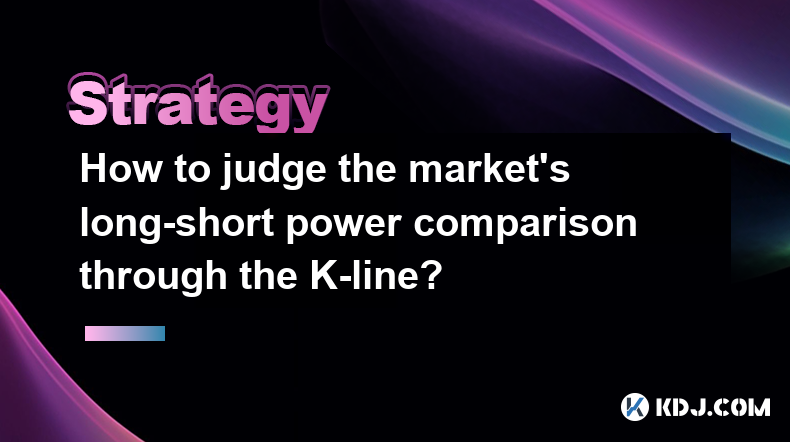
How to judge the market's long-short power comparison through the K-line?
Apr 03,2025 at 02:39pm
Judging the market's long-short power comparison through the K-line is an important skill in technical analysis. The K-line chart can not only show price changes, but also reflect the emotions and power comparison of market participants. This article will introduce in detail how to judge the market's long-short power comparison through K-lines. ...
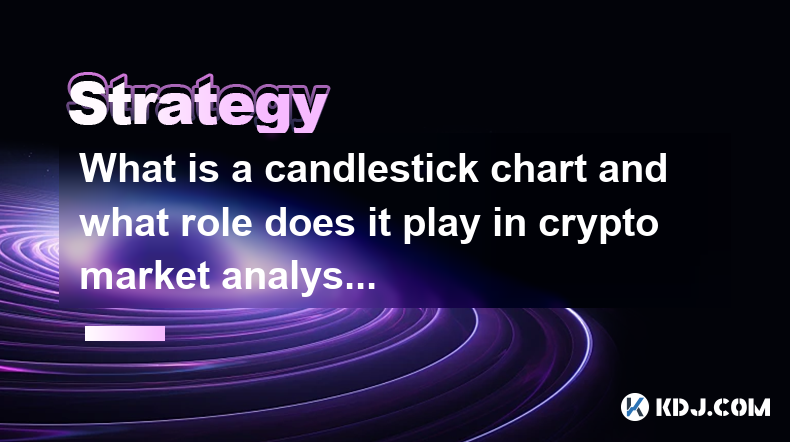
What is a candlestick chart and what role does it play in crypto market analysis?
Apr 03,2025 at 02:26pm
K-line chart, also known as candle chart, is a form of chart used to display changes in the price of financial products. In the cryptocurrency market, K-line charts are widely used to analyze the price trends of digital assets such as Bitcoin and Ethereum. This article will introduce in detail the basic structure, types of K-line charts and their specif...

Forced liquidation price calculation in CoinEx futures trading
Apr 03,2025 at 05:35am
In CoinEx futures trading, understanding the forced liquidation price is crucial for managing risk and maintaining your positions. The forced liquidation price is the point at which your position is automatically closed to prevent further losses. This mechanism is designed to protect both the trader and the platform from negative account balances. The c...
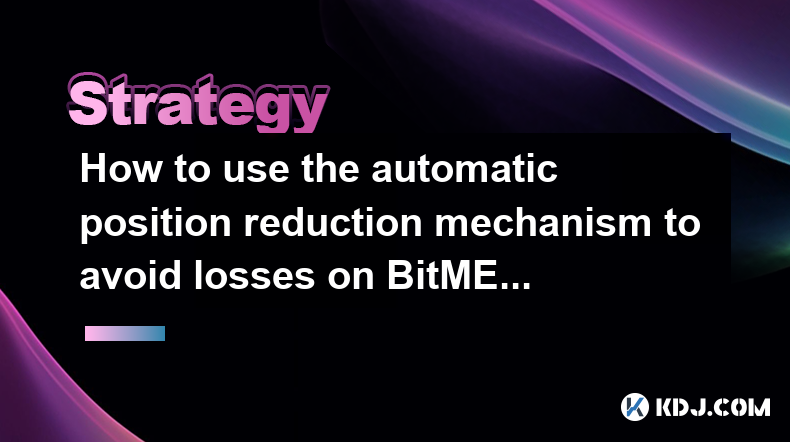
How to use the automatic position reduction mechanism to avoid losses on BitMEX
Apr 03,2025 at 02:56am
Using the automatic position reduction mechanism on BitMEX can be a strategic approach to managing risk and avoiding potential losses in the volatile cryptocurrency market. This feature, also known as Auto Deleveraging (ADL), is designed to help traders by automatically reducing their positions in certain conditions. To effectively use this mechanism, i...
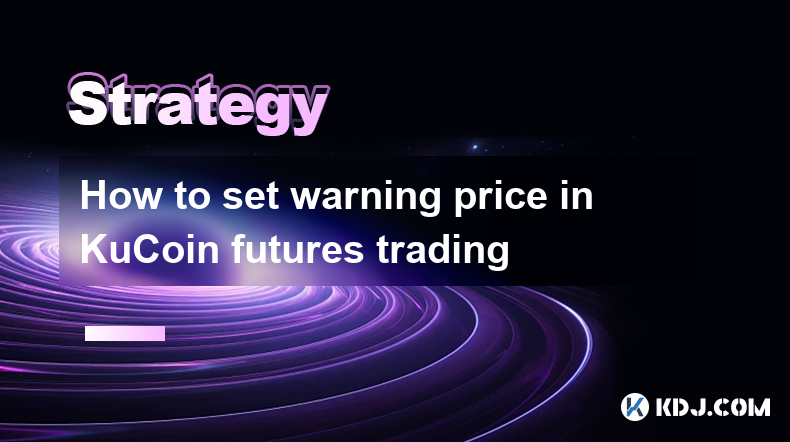
How to set warning price in KuCoin futures trading
Apr 03,2025 at 08:14am
Setting a warning price in KuCoin futures trading is an essential feature for managing risk and staying informed about market movements. This tool allows traders to receive notifications when the price of a futures contract reaches a specific level, helping them make timely decisions. To set a warning price, you need to navigate to the futures trading i...

How to use the three crows candlestick combination to determine the market top?
Apr 03,2025 at 03:18pm
Three Black Crows are a classic K-line combination form that is often used to judge the top of the market in technical analysis. This pattern consists of three consecutive negative lines, the opening price of each negative line is within the entity of the previous K-line, and the closing price gradually decreases. This pattern usually appears at the end...

How to judge the market's long-short power comparison through the K-line?
Apr 03,2025 at 02:39pm
Judging the market's long-short power comparison through the K-line is an important skill in technical analysis. The K-line chart can not only show price changes, but also reflect the emotions and power comparison of market participants. This article will introduce in detail how to judge the market's long-short power comparison through K-lines. ...

What is a candlestick chart and what role does it play in crypto market analysis?
Apr 03,2025 at 02:26pm
K-line chart, also known as candle chart, is a form of chart used to display changes in the price of financial products. In the cryptocurrency market, K-line charts are widely used to analyze the price trends of digital assets such as Bitcoin and Ethereum. This article will introduce in detail the basic structure, types of K-line charts and their specif...

Forced liquidation price calculation in CoinEx futures trading
Apr 03,2025 at 05:35am
In CoinEx futures trading, understanding the forced liquidation price is crucial for managing risk and maintaining your positions. The forced liquidation price is the point at which your position is automatically closed to prevent further losses. This mechanism is designed to protect both the trader and the platform from negative account balances. The c...

How to use the automatic position reduction mechanism to avoid losses on BitMEX
Apr 03,2025 at 02:56am
Using the automatic position reduction mechanism on BitMEX can be a strategic approach to managing risk and avoiding potential losses in the volatile cryptocurrency market. This feature, also known as Auto Deleveraging (ADL), is designed to help traders by automatically reducing their positions in certain conditions. To effectively use this mechanism, i...

How to set warning price in KuCoin futures trading
Apr 03,2025 at 08:14am
Setting a warning price in KuCoin futures trading is an essential feature for managing risk and staying informed about market movements. This tool allows traders to receive notifications when the price of a futures contract reaches a specific level, helping them make timely decisions. To set a warning price, you need to navigate to the futures trading i...
See all articles






















































































